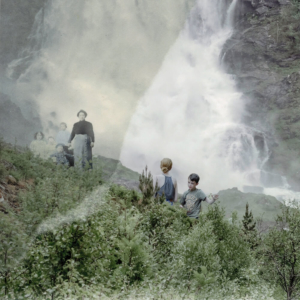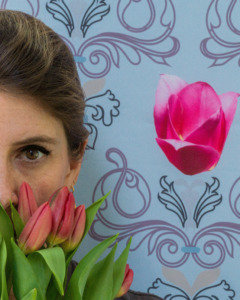This website uses cookies so that we can provide you with the best user experience possible. Cookie information is stored in your browser and performs functions such as recognising you when you return to our website and helping our team to understand which sections of the website you find most interesting and useful.
Interview with Diana Cheren Nygren, LICC Winner in SHOOT (Photography) in the Non-Professional category, about how pandemic inspired her to go back in history and connect pieces and people in her winning project.
Why did you choose to pursue a career as a photographer? When did you realize
you wanted to pursue this as a career?
I have been a fairly serious photographer for decades. I toyed with the idea of trying to pursue a career as a photographer after college. Sadly, I was quickly discouraged and I went in other directions. I have done some portrait photography for clients over the years, but it is only in the last five years that I have found myself in a situation which enabled me to throw everything I had into pursuing a career as a fine art photographer. It requires being somewhat obsessively dedicated. After two decades of life largely focussed on my children, this is the first time I have been in a position in which I felt free to be somewhat selfish in how I use my time.
How does it make you feel to win this award?
I was honestly shocked to win this award. The amazing reception and recognition the series for which I was awarded has received has been deeply gratifying. Still, there is so much incredible work out there, that it is humbling and surprising when it is selected.
What do you feel makes your work stand out, that drew the judges’ attention to it?
I am often struck by the underlying irony of creativity that what seems unique and unusual to others often seems obvious to the artist. I followed what felt to me like a natural progression in developing this project, but I wound up approaching the subject of family photographs, and particularly old family photographs, in a new way that perhaps no one else had landed on yet. The use of mixed media and alternative media and printing methods also lend themselves to being used in original ways. As I worked on this project, I was struggling to find a way to make the different generations in the picture relate to each other in the way I wanted – to make the distinction between them clear, but also to make them connect and reach for each other, and each inhabit space in a relatively equal way and as naturally as possible. I played around with putting the ancestors on a layer of vellum, but I couldn’t find one translucent enough to make the entire image legible. I finally solved that by tearing the velum to reveal the layer with the current generation. The result was a pretty unique presentation. There is a lot of work right now using old photographs, but most of it winds up having a retro kind of feel. I think the thing that stands out with the treatment I developed is that even though it includes old photographs, ultimately it feels modern.
How did the idea behind your winning project come about?

Best in SHOOT (Non-Professional): “The Persistence of Family” by Diana Cheren Nygren
I had the idea for this project at the beginning of lockdown in 2022. I don’t think of it as a pandemic project in the sense that it’s definitely not about the pandemic. But it’s inspired by a shift in my own focus and priorities which grew out of the situation. I mostly photograph when I am walking around unfamiliar places, and less so familiar places, but almost never indoors at home. I had just finished working on a major project. In fact, it was set to open in a show the week we shut down. So lockdown left me at a bit of a loss about what I wanted to work on next. Luckily, the previous project had involved compositing and so I started to think about work I could make by bringing together parts of images I already had. At the same time, I was very aware of how small my world had become, and everyone’s. My world was primarily my family, and although I missed my friends a lot, that was somehow enough. I became increasingly conscious of the defining nature of family and family relationships. The historical nature of the moment also elicited a new kind of awareness of the present as existing within an ongoing historical narrative. Suddenly everyone was talking about the 1918 flu pandemic. And I began to think about how this experience might compare to the things earlier generations of my family had gone through, how it might shape my children, and how aware they were (or were not) of their own heritage and history. All of this led me to pull out old family albums and to consider ways of connecting the pieces and people that felt significant and personally defining.
What impact does your background have on your work?
I studied art history in college, and continued to train as an art historian in graduate school. I have also always been very crafty. I love making things. I think my work very much arises from the meeting of my artistic side and my intensely academic training.
What significance does your art represent for you personally, and for your audience?
For a long time I saw my photography as a way of capturing and looking more closely at things that might otherwise go unnoticed. In recent years my practice has evolved into what could be considered more of an art form. Photographs are the launching-off point for creating a vision that tells a story or explores an idea that is outside of what can be seen through visual observation of a single moment. This has been extremely fun, and I think results in something more unexpected and engaging for the audience. And hopefully I am saying something worthwhile in the process.
How do you envision the future of your industry? What do you see as the most significant difficulties and opportunities?
I am currently preoccupied with NFTs and the impact they will have on the practice of photography. I have a lot of anxiety about NFTs. Photographers seem to be talking about them constantly and there is enormous pressure to go in that direction or be left behind. But aside from concerns about the environmental impact of the NFT market and issues about the security and potential social inequity underlying cybercurency, a lot of what I have seen so far is just photographers making their photographs available as NFTs. In my opinion, the digital version is generally the poor relative of the physical print and ultimately inferior. I think in order to justify moving into the NFT space, the work itself should be taking advantage of the specific attributes of this new medium, so that the NFT is actually the best way of presenting that work. Personally, I have not yet figured out what that would look like.
View the winning project of Diana Cheren Nygren here.
© 2024 London International Creative Competition




Recent Comments